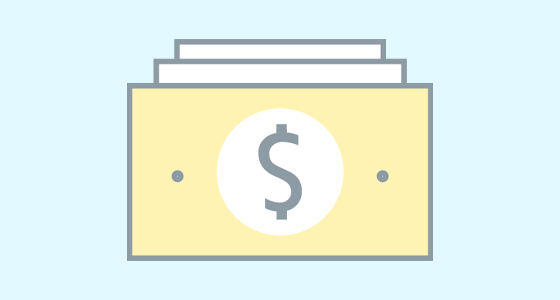
Ask a B2B business owner to name both the value and price of their product or service and you may get two different numbers. That’s because the market ultimately dictates the price consumers will pay. While B2B can borrow the best strategies from B2C when it comes to Ecommerce pricing strategy, business owners need to take into account that their buyer, which could be a wholesaler or distributor, has their own margin to protect. It’s complex, and that’s why when you’re trying to establish how to price a product, data-led decisions must trump emotional ones. Discover the eight strategies that deliver the best results in B2B Ecommerce.
Why Product Pricing Is Critical
It looks so simple, yet 80% of B2B companies admit to struggling with their pricing strategy. Given the wide availability of digital price aggregators and comparison engines, there’s now less time for business owners to find the sweet spot. Let’s not forget that pricing is more nuanced than profitability. It can also be a defensive strategy for keeping out unprofitable customers, or an aggressive tactic for building a customer base, particularly when working with wholesalers.
Factors That Affect Pricing
Whatever eventual strategy you choose, there are certain external factors that will make their presence felt. To reach your ballpark pricing figure, you’ll first need to consider:
Competitor Benchmarks
What do your competitors charge, and what is your relative standing in relation to them? If you’re trying to disrupt a market, your strategy will be very different to the one you’d deploy if you were the market leader, for example.
Buyer Personas
It’s important to know whether your customers are looking for savings or service, if they’re new to the market or mature, and what pain points you can leverage to negotiate with them on price.
Level of Customer Price Sensitivity
Once you know your competition and buyer persona, it’s easier to establish the benchmarks for where your products would be considered a bargain at the lower end, or premium at the upper limit.
Value Metrics
What is the per-unit value of your product or service? If you’re selling latex gloves to medical clinics, for example, you have just one opportunity to generate revenue per item. If you’re selling bundled services or those that buyers can customize, on the other hand, you may choose to offer the initial item at a lower price in order to secure more lucrative add-ons later.
8 B2B Ecommerce Pricing Strategies
With these factors in mind, consider the eight most common B2B pricing strategies below.
1. Cost-Plus Pricing
If the priority is to protect profitability, cost-plus pricing delivers. Simply take the cost of the item and apply the desired markup percentage to obtain the selling price. Cost-plus pricing doesn’t require you to allocate resources to data analysis or market research. However, it leaves you vulnerable to competitors, and there is no guarantee that you’ll find a buyer.
2. Competitive Pricing
Given that customers may choose to start their search for a solution by filtering the options on price, competitive pricing allows you to pitch your price against the competitors. In its simplest form, you choose a price point that sits close to the average for your sector. The weakness of competitive pricing is that it is no indicator of product cost or value, and if the market moves, you could find yourself stranded.
3. Value-Based
Often seen as the most consistently effective strategy, value-based pricing factors in the pricing opportunity attached to a potential sale. In other words, you target the perceived value in terms of what you think your customers would be willing to pay after branding and service/support are included. It’s a data-intensive strategy that requires ongoing research and measurement, but without value-based pricing it’s hard to imagine the $1,000 smartphone or business class airline travel.
4. One-Size-Fits-All
Also known as “flat rate” pricing, this strategy presents customers with a “take it or leave it” proposition. Pricing makes no concession to buyer persona, order volume or purchase history. It’s fair and transparent, but also restrictive if the competition makes its move.
5. User/Usage-Based Pricing
A common strategy in SaaS and other service-oriented businesses, this model determines price either according to the number of users for a particular product, or the frequency of use. The more users or greater the usage, the higher the subscription fee, sometimes with an introductory, limited-time free option. This strategy is flexible for the customer, but makes it harder to forecast revenue for the vendor.
6. Customer-Specific Pricing
A great way to reward your most engaged and profitable customer segments, customer-specific pricing typically presents tiered pricing options to meet a variety of purchasing volumes, budgets or patterns. It’s one of the core value propositions of B2B software Ecommerce, in particular. Key to success is the ability to clearly define customer segments so that you can pander to the 20% who typically account for 80% of revenue.
7. Dynamic Pricing
In B2C Ecommerce, dynamic pricing is the defining feature of the aviation and tourism industries, but it’s effective in B2B too. The basis of dynamic pricing is that prices fluctuate (perhaps dramatically) according to urgency, demand, seasonality or remaining stock. The barrier to entry for B2B businesses is that your Ecommerce store will need the software engine to track numerous data streams and apply real-time adjustments.
8. Discount Pricing
Wholesalers frequently employ discount pricing to protect their market position, but it’s also a sound strategy to keep inventory costs low in case of overstocking. Unlike tiered pricing, which is designed to draw customers towards a higher Average Order Value (AOV) over time, discount pricing drops the value when certain thresholds are met. If your buyer increases their order volume, for example, or pays faster than normal, they receive a discount price. You may take a hit on AOV, but end up winning on Customer Lifetime Value (CLV).
Finding the Right Pricing Strategy for Your Business
Regardless of the strategy you choose for your B2B Ecommerce business, Zoey can help you establish and maintain pricing that supports profitability and growth. Contact us to see how Zoey can provide you with the tools to succeed in B2B Ecommerce.
Nick Marshall is a freelance writer from the UK covering B2B marketing, emerging tech, payments and Ecommerce. He lives on a tiny island with slow internet in the French Caribbean, but was formerly an agency copywriter in the UK.





